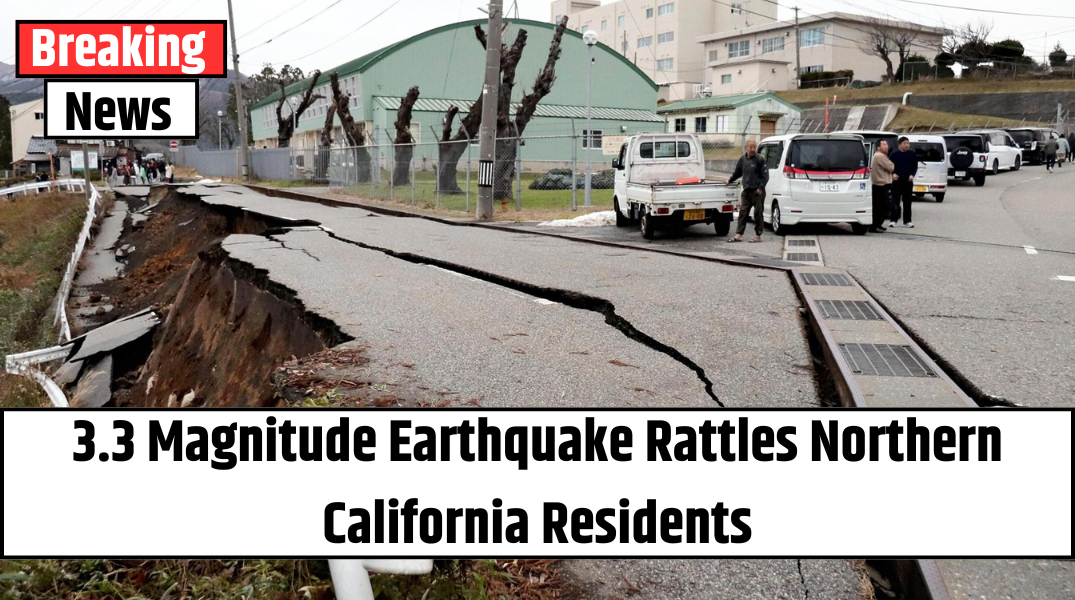A mild earthquake shook part of Northern California on Monday evening, offering a gentle nudge about the region’s ever-present seismic risks. The quake, which struck west of Los Banos at 6:37 p.m., was measured at a magnitude of 3.3 by the United States Geological Survey (USGS).
Though relatively minor, the earthquake was felt by some residents across the Central Valley and parts of the Bay Area, particularly due to its shallow depth and timing during peak evening hours when many people were at home.
Revised Data Confirms Lower Magnitude
Initial USGS estimates rated the quake at 3.6, but this figure was later refined to 3.3 as more data rolled in from regional seismic sensors. These kinds of adjustments are typical—automated systems offer fast but preliminary readings, while seismologists fine-tune the numbers based on wider input from monitoring stations.
The quake’s epicenter was located roughly 16 miles west of Los Banos and about 30 miles southeast of San Jose, placing it within a region known for a dense web of fault lines.
The Science Behind the Shaking
Although the shaking was considered “weak” on the Modified Mercalli Intensity Scale—not strong enough to cause structural damage—it was enough to remind locals that they live in an active tectonic zone shaped by the boundary between the Pacific and North American plates.
Even a relatively minor event like this helps scientists refine their understanding of how earthquakes propagate through various soil types and rock formations.
Why Small Quakes Still Matter
Northern California is no stranger to seismic activity, recording hundreds of small earthquakes each year, most of which go unfelt. But quakes like Monday’s, though harmless, offer critical data for scientists and an opportunity for public reflection on preparedness.
The Los Banos area sits just south of the Calaveras and Hayward Fault zones, two well-monitored geological features that have produced damaging quakes in the past. The earthquake’s proximity to San Jose also puts it within range of millions of people who could be affected if a larger seismic event occurred.
Also Read – Mountain View Considers El Monte Road Diet Following Pedestrian Deaths
Aftershocks and Ongoing Monitoring
While no aftershocks have been reported so far, aftershocks are always a possibility following any tectonic movement. These follow-up tremors can occur within days or even weeks of the initial quake, although they typically diminish in strength.
The USGS continues to track seismic activity in the region using an array of high-tech instruments that can detect movements as small as a fraction of a millimeter. These efforts are critical to building more accurate hazard models and informing local building codes and emergency plans.
Public Participation Enhances Research
One of the most useful tools in earthquake science comes from the people themselves. The “Did You Feel It?” program encourages individuals to report what they experienced during an earthquake, helping researchers map perceived shaking intensity across different communities.
These firsthand accounts, when combined with data from seismometers and GPS instruments, give a more complete picture of how earthquakes affect people and infrastructure.
Staying Prepared in a Quake Zone
Although Monday’s event didn’t cause any injuries or damage, it reinforces the importance of preparedness. Experts recommend having an emergency kit with essentials like food, water, flashlights, and first-aid supplies, and making sure heavy objects at home are secured.
Practicing safety techniques such as “Drop, Cover, and Hold On” can reduce injuries during stronger quakes. Families are also encouraged to create communication plans and identify safe spots in their homes.
California’s Seismic Legacy
Northern California has experienced major earthquakes in its history, from the infamous 1906 San Francisco Earthquake to the 1989 Loma Prieta Quake, both of which left lasting marks on building practices and emergency protocols.
Thanks to advances in earthquake engineering and public awareness, today’s structures are more resilient, and communities are better informed. Yet, the unpredictable nature of earthquakes means the risk can never be completely eliminated.
Technology’s Role in Seismic Safety
Innovative technologies are transforming how we detect and respond to earthquakes. Smartphone sensors, real-time alerts, and early warning systems like ShakeAlert are all tools being developed and deployed to give people seconds of advance notice—enough to potentially save lives.
Also Read – Adams County Authorities Make Several Drug and Firearm Arrests
Satellites also play a role, tracking how the Earth’s surface shifts during and after quakes. These changes, known as ground deformation, help scientists model how faults behave over time.
Final Thoughts
Monday’s 3.3-magnitude tremor was a small one—but for Californians, it served as a timely reminder that preparedness is a year-round necessity. Whether you felt it or not, earthquakes remain an integral part of life in the Golden State.
While the earth may only have shifted slightly beneath Los Banos, it’s another data point in a much larger story of geological activity, scientific exploration, and the ongoing quest to stay one step ahead of nature’s next big move.










